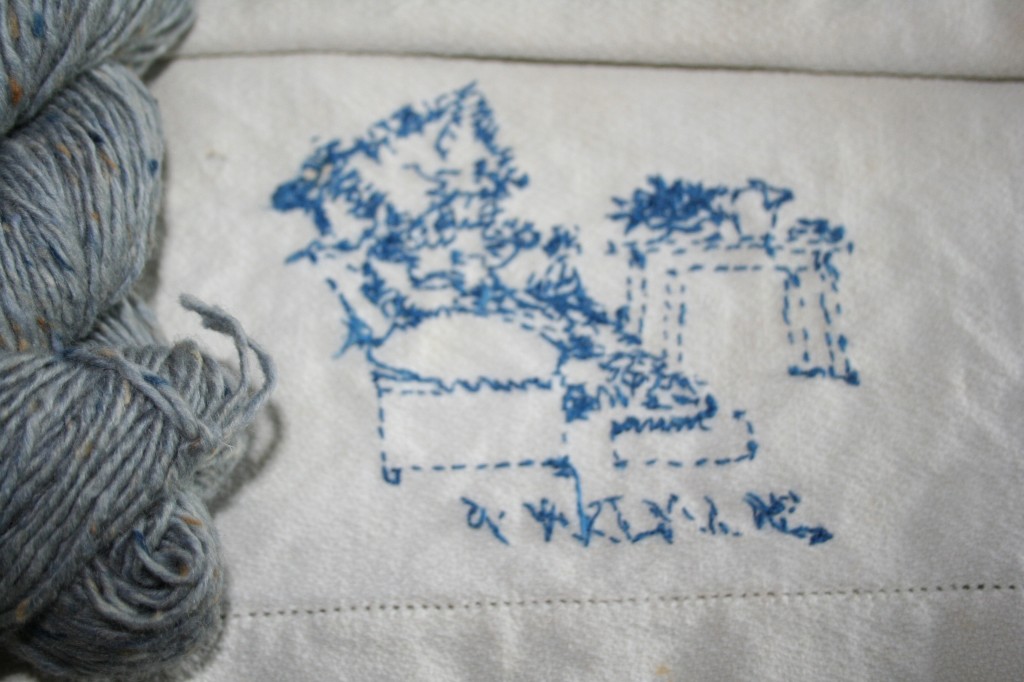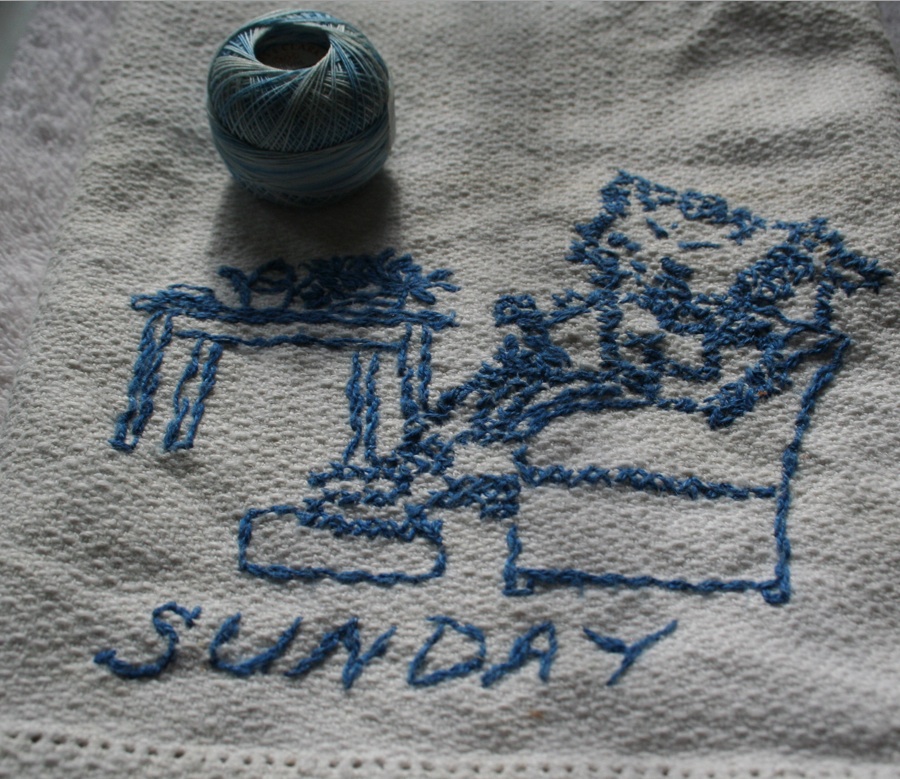Human hands make things that tell stories, even when the person who made them is gone.
Knitting through storms of life (a parent’s failing health, cherishing time left, juggling work/life), the reverse side of a embroidered cotton towel caught my attention – and led to an impromptu tour through family history, textiles, water power, mills and industrial heritage.
A careful knot in the blue floss embroidery was put there by my maternal grandmother as she stitched a set of daily chores dish towels. She made this pattern appear.
My grandmother could embroider, tat, crochet, knit – and make yo-yo quilts. I never met her, except through stories told and woven clear as day by my own mother, one of 11 children – yes, 11 – and this surviving cloth-and-floss record of her time, found while clearing out a closet.
Unknown hands harvested raw cotton – using machines or not; others oversaw the woven production of the fabric. Water provided power to transform all into work that has withstood many washings. As an unsigned textile canvas, it’s a link to one woman’s creativity transmitted to her daughter – my mother – who preserved the set of which one remains. We are knit together by biology and her love; the towel is a touchstone.
Mills and the human history they can tell are fascinating. (They also make a person glad to be living now, not then.) Note: To learn more about the mill or Boott Cotton Mills, which is now a museum and part of Lowell National Historical Park and the National Park Service (NPS) system, see this link. The NPS photo below is also linked to learn more about the mill complex and park.





